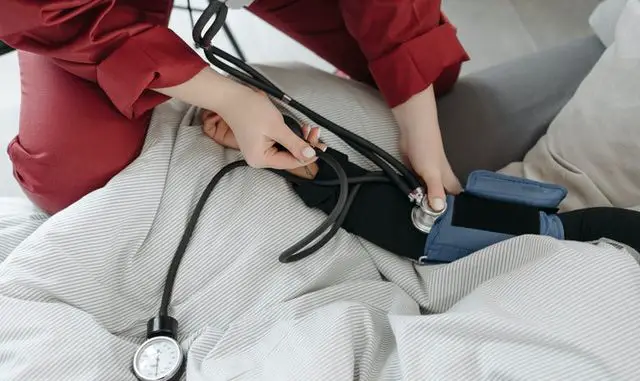
Gallbladder Problems without Gallstones Gallbladder disorders are usually caused by gallstones; however, there can be gallbladder problems without gallstones.
The gallbladder is located beneath the liver. This small organ concentrates the bile and releases it into the intestines whenever you eat fatty foods. Bile is composed of water, cholesterol, some inorganic salts, and pigments (1). This fluid has a role in the digestion of fats. Without it, the body would not be able to process fatty foods. Digestive problems are usually caused by irregularities in bile flow.
This usually happens when a gallstone gets stuck in the cystic duct. This can cause complications, some of which can be very serious. We will tell you more about some gallbladder disorders that are not caused by gallstones.
Gallbladder Disorders without Gallstones
Gallbladder inflammation is characterized by symptoms like:
- Abdominal pain
- Fever
- Nausea
- Indigestion
Abdominal pain starts after eating (it can occur at night as well) and can become severe and persistent. Some people may experience pain in other parts of the abdomen. This is called “referred pain”. Diarrhea, fever, nausea, and vomiting are some of the symptoms that may occur along with abdominal pain.
High fever and jaundice can occur in severe cases. These symptoms indicate complications, like perforation, abscess formation, and ascending cholangitis. The gallbladder can perforate and create a fistula near the small bowel (this is called “gallstone ileus”), which leads to intestinal obstruction.
What Are the Causes of Cholecystitis?
This condition is usually caused by gallstones, but cholecystitis can occur even if there are no gallstones. Secondary infections (bacterial infections, to be precise) can lead to gallbladder inflammation. This condition can lead to complications, such as rupture and necrosis. The inflammatory process can affect the outer covering and other surrounding tissues (the bowel and diaphragm).
Acalculous cholecystitis can be described as gallbladder inflammation without gallstones. It can affect people who suffer from anorexia. In such cases, the gallbladder is not stimulated enough, which can lead to infections.
Gallbladder Polyps
Gallbladder polyps can be described as growths in the gallbladder wall. Sometimes, these are just lessons that resemble growth (2). There are several types of growth in the gallbladder: cholesterol polyps, adenomyomatosis, adenocarcinoma, hyperplastic cholecystitis, etc. True polyps are not dangerous unless they are larger than one centimeter. Large polyps can become cancerous, so it is important to start treating them in time.
The cause of this condition is still unclear. Doctors believe that gallbladder polyps can be caused by gallstones, but numerous cases prove that this is not entirely true. In other words, gallbladder polyps can develop even if there are no gallstones, but people who have gallstones (or have a family history of gallstones) are at greater risk of developing gallbladder polyps.
Gallbladder polyps usually don’t show any symptoms. In most cases, polyps are detected when ultrasonography is done (for some other reason). Most of these growths are harmless, but their growth must be monitored. If they reach a certain size, they can become cancerous. However, more research will have to be done to determine the connection between gallbladder cancer and gallbladder polyps.
Gallbladder Cancer
Gallbladder cancer is a rare condition. It usually shows no symptoms at early stages; however, when the symptoms occur, they will include:
- Appetite loss
- Weight loss
- Weakness
- Vomiting
- Constant pain in the abdomen
- Jaundice
Gallbladder cancer is a deadly disease. It can only be treated if diagnosed early. The only treatment for gallbladder cancer is gallbladder removal. However, if the cancer has spread, chemotherapy will have to be carried out. Along with the gallbladder, lymph nodes and one part of the liver will also be removed.
Article Studies, References, and Resources
- The role of the gallbladder in humans by J L Turumin 1, V A Shanturov, H E Turumina – https://pubmed.ncbi.nlm.nih.gov/23683886/
- Diagnosis and Management of Gallbladder Polyps By Åke Andrén-Sandberg
https://www.ncbi.nlm.nih.gov/pmc/articles/PMC3359430/


Every single hourly payout averages at about $1,000 with an average pot of $25,000 a day.
Hi to every one, the contents existing at this web page are in fact amazing for
people knowledge, well, keep up the nice work fellows.